I recently read Hugo Jacomet’s new book, Shoes: The Art of Male Footwear, which includes a chapter on Maftei. I am completely surrounded by Maftei shoes in my room, occasionally glanced at it, or picked it up and played with interest, and I assure that this old gentleman’s work is worthy of praise.
People have a higher level of desire for what they like, and Maftei is undoubtedly one that can satisfy this desire.
Last
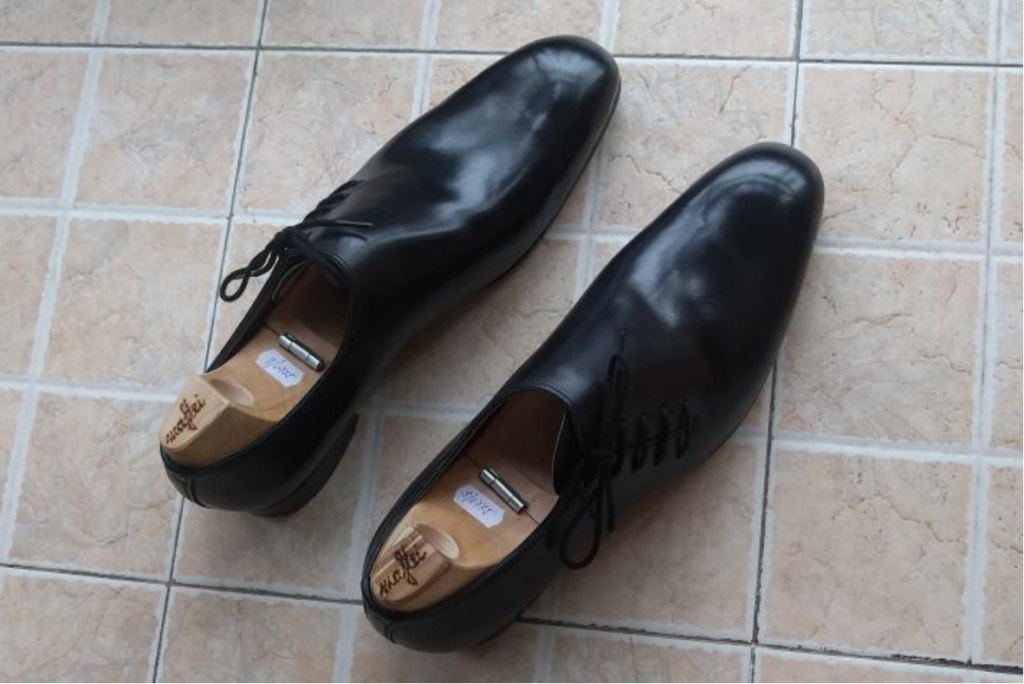
The very familiar Austro-Hungarian last, full of space toe, most of the spatial sense of this place is not for more comfortable feet, but the shape of the sense of power.
Banana shape last, which fit the shape of the foot, gives the outside of the little toe a better wrap without squeezing.
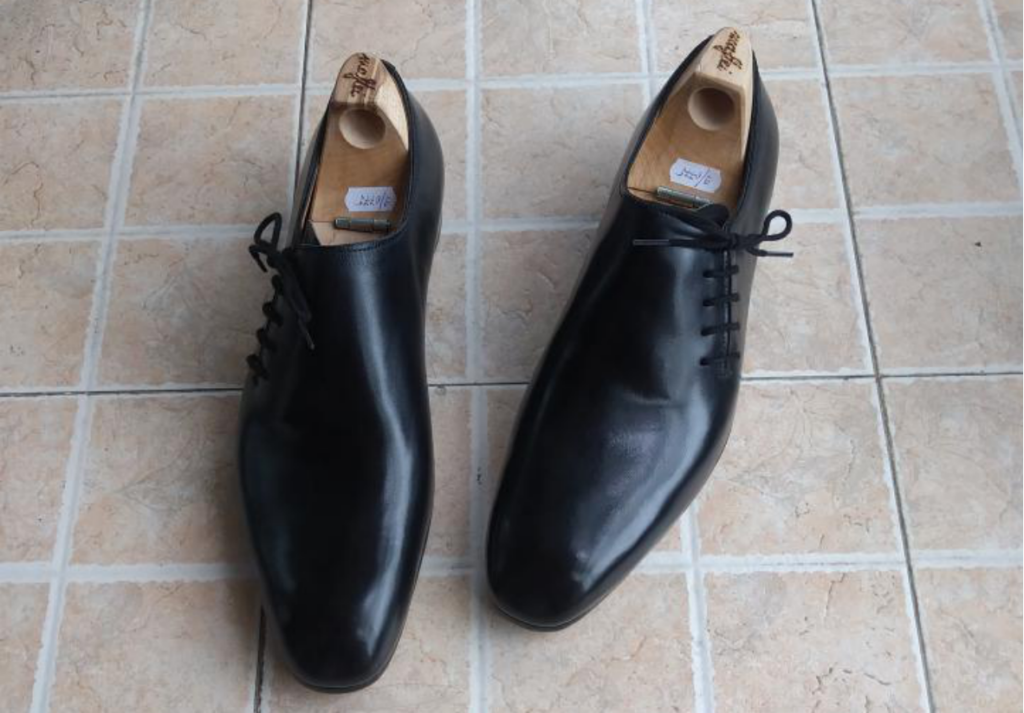
From other angles, it has a more modern aesthetic symmetry, while absorbing the taste of Britain and Italy.
Pattern

A pair of five-eyelet Side Laced one-piece Oxford.
In contrast to the traditional Wholecut oxford, the laces are moved from the middle to the side.

Wholecut is already a very dandy Oxford style in my eyes, and this side lace is more rebellious, more uninhibited. Go to the name of the Austrian novelist Kafka, whose literary works are the pinnacle of expressing ideas, although in connotation, a little gray and helpless, but out of place with the surrounding temperament.
Craftsmanship
The craftsmanship of this pair of shoes is the first time I have seen it, and there are so many top international custom shoemakers on Instagram, I have never seen it. I have heard about this craft, called full blind stitching.
Blind stitching can be explained from the blind waist, an element that more people know. The blind waist is when the sole leather of the waist is pushed up, so that the waist of the leather shoe is invisible from many angles, achieving a more elegant/feminine aesthetic expression.
Then full blind stitching is that the sole cannot be seen from many angles.
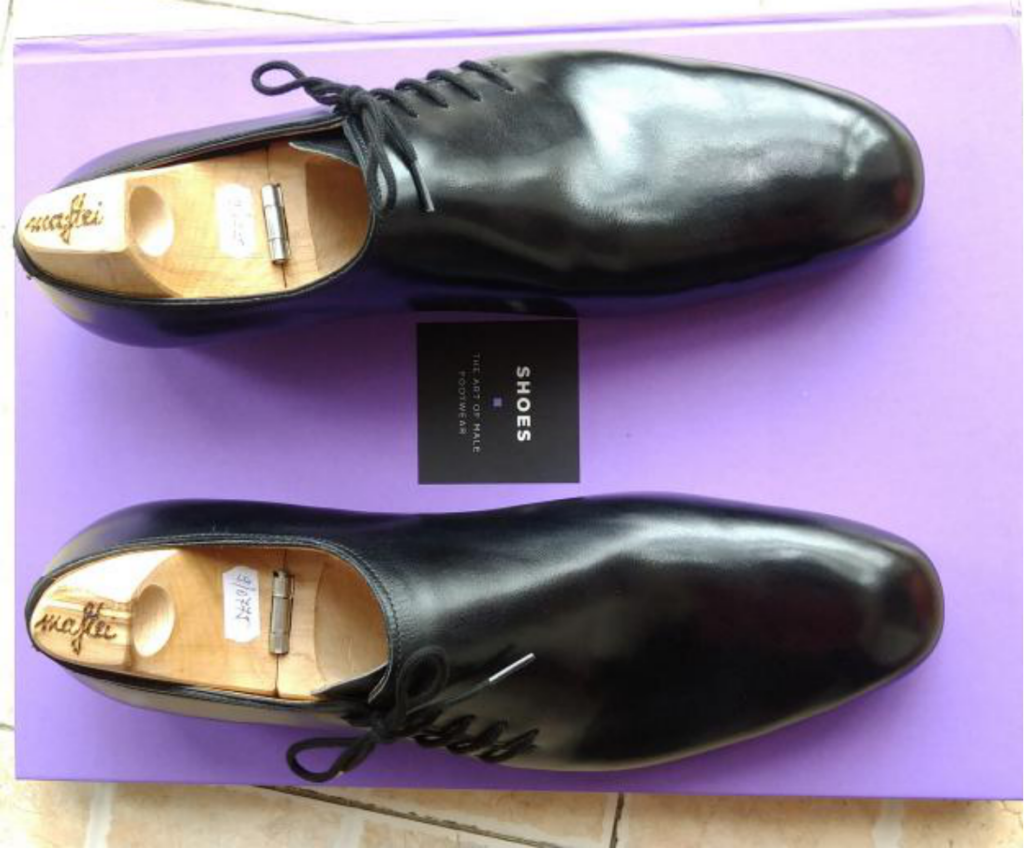
Top view, can you see the welt or sole?
Although the stitches can be invisible by perfectly matching with fudge, covered by wax, or grooved along the welt. However, the welt is still visible.
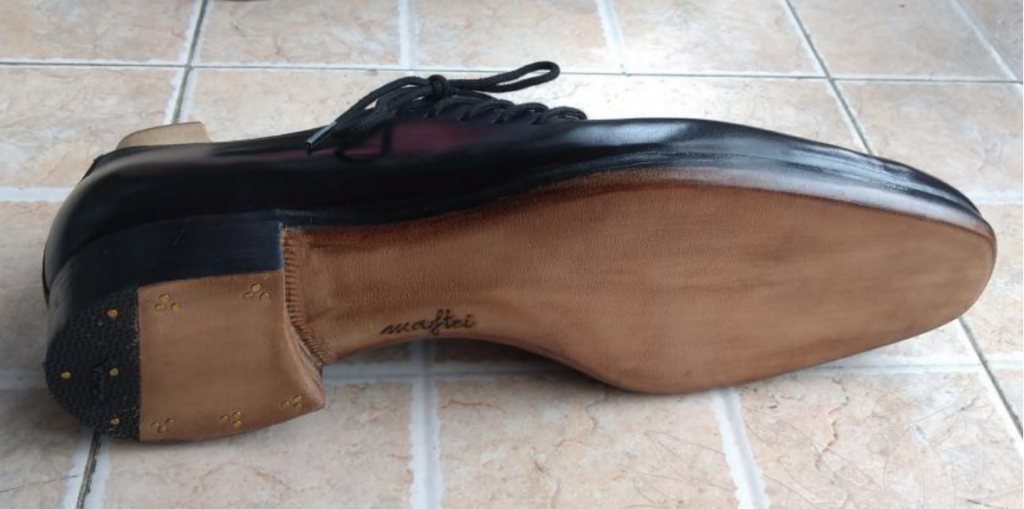
So how is full blind stitching achieved? In fact, the same as the treatment of blind waist, that is, after sewing, the sole leather is “rolled out” to the upper leather.
From the picture above, you can see that the edge of the sole is very rounded, which is not sanded by a machine, nor cut with glass, but rolled out with a blunt instrument.
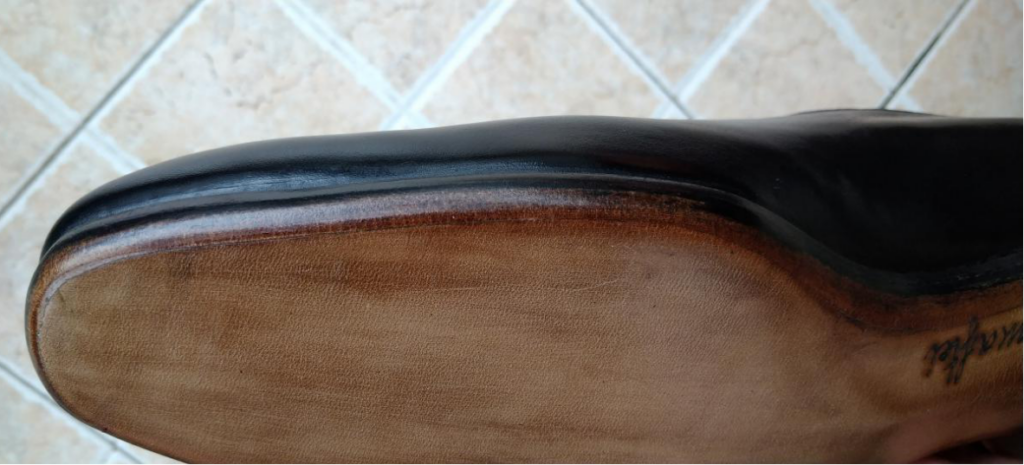
On the sole, you can see where the stitches are grooved and covered, as well as the rounded edges.
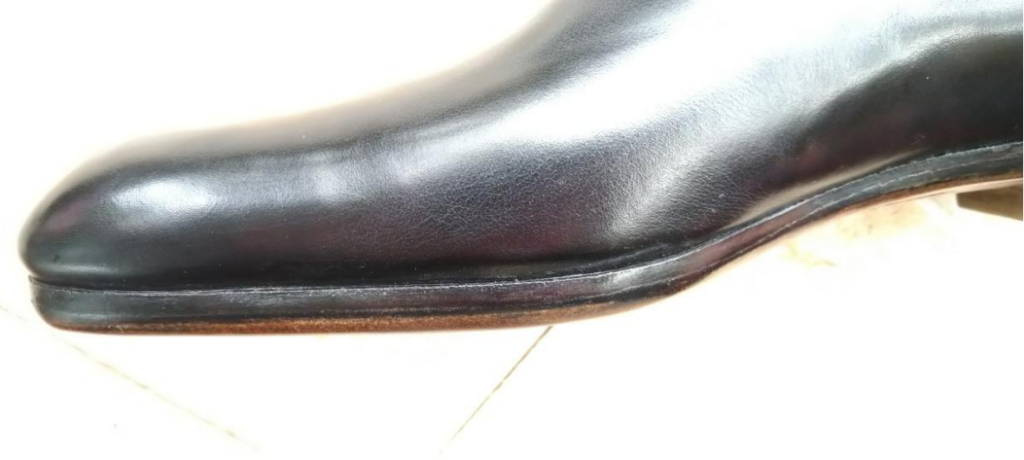
The edge of the sole can also be seen from the side, and even within the contour of the upper.
Summary
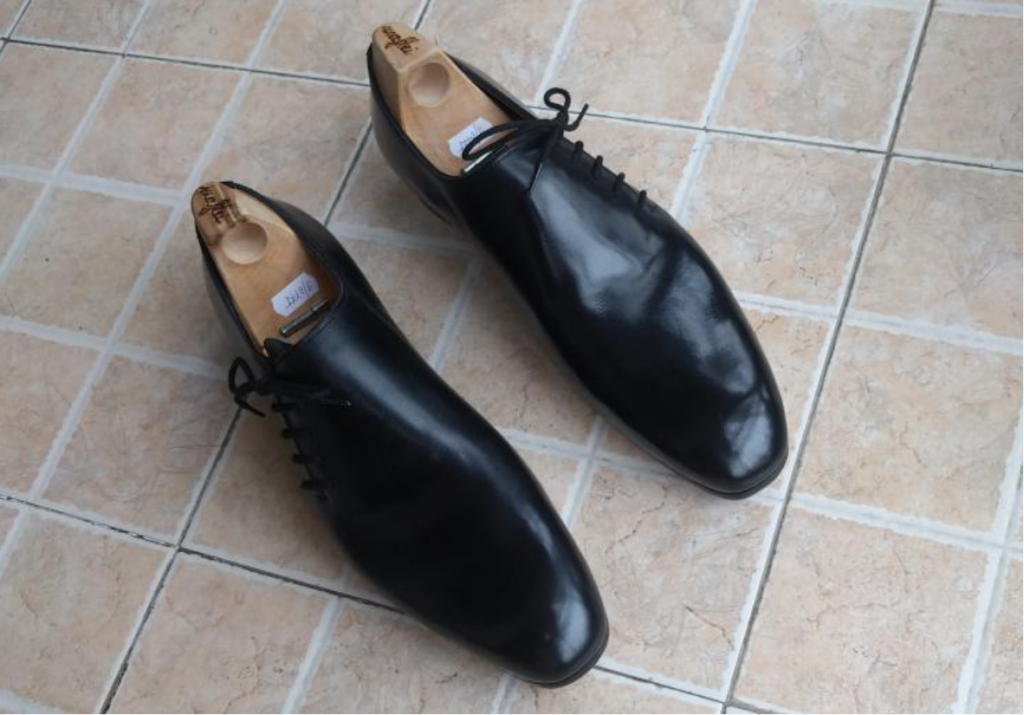
Is it a very unique, highly skilled pair of shoes? It is. I feel that it is the fruit of creative human undifferentiated labor, and how to evaluate it, I leave it to everyone.

